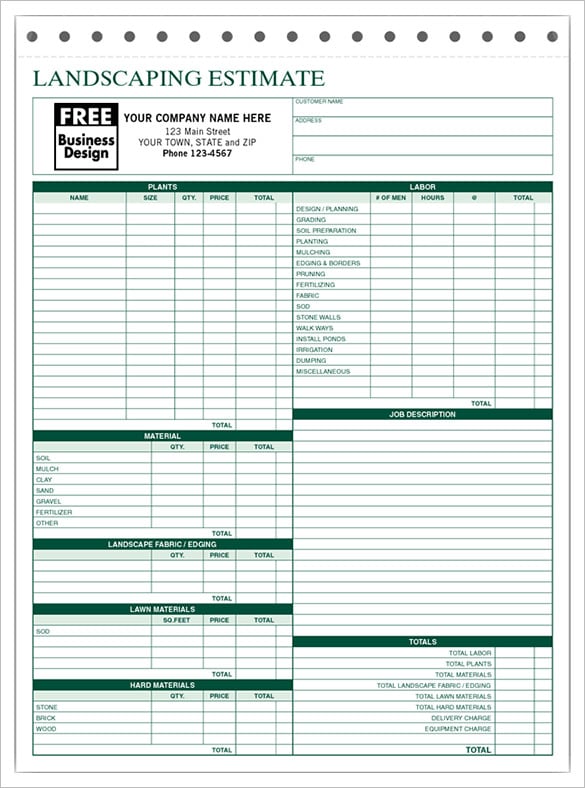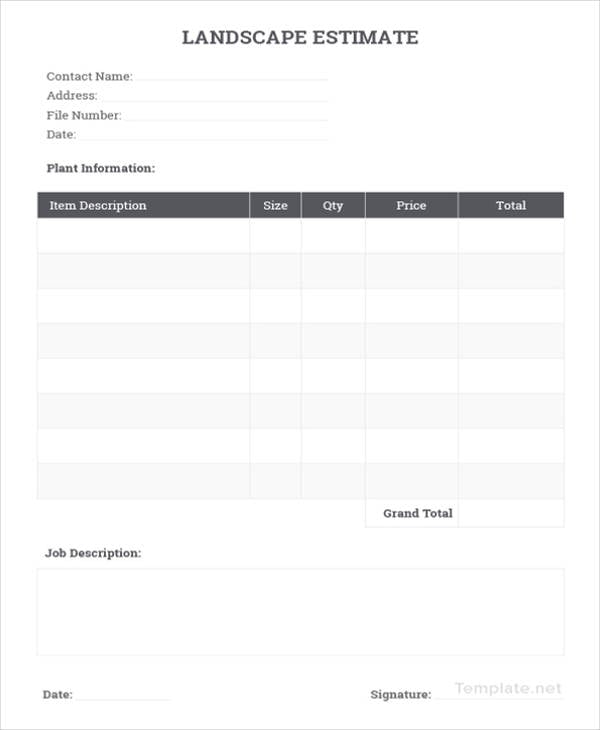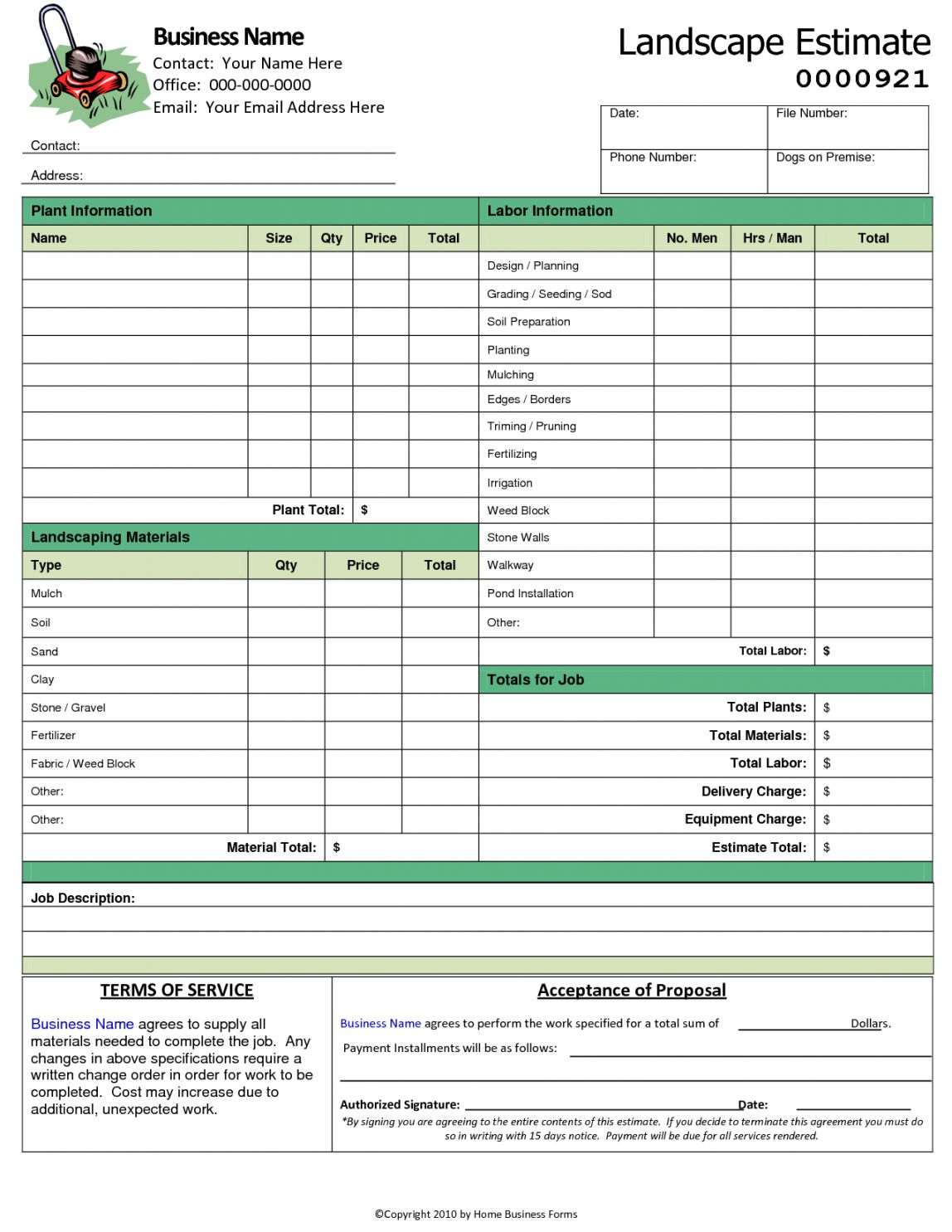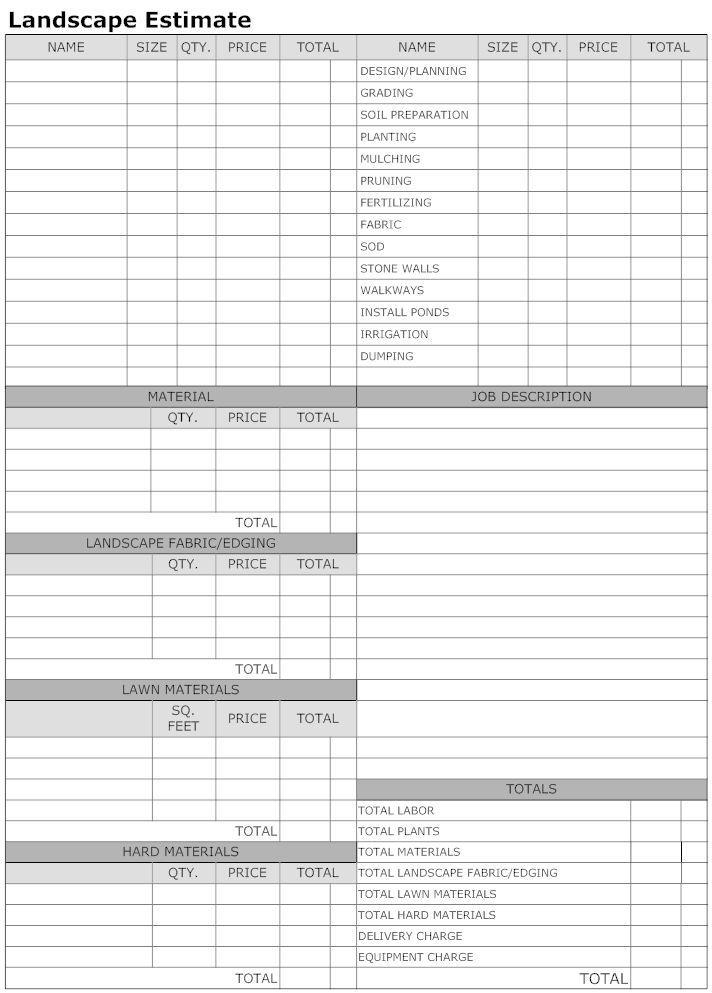
As a contractor or landscaper, providing accurate estimates is crucial for the success of your business. The landscape estimate template is a valuable tool that can help you streamline the estimation process and ensure that you are providing your clients with accurate and detailed estimates.
In this article, we will explore the importance of using a landscape estimate template, how to create one, and provide you with some examples and best practices.
What is a Landscape Estimate Template?
A landscape estimate template is a pre-designed document that helps contractors and landscapers calculate and present estimates for their services. It includes various sections and fields that allow you to input details such as labor costs, material costs, equipment costs, and any additional charges. The template provides a structured format that ensures all necessary information is included, making it easier for both the contractor and the client to understand the scope of the project and the associated costs.
Using a landscape estimate template offers several advantages. Firstly, it saves time as you don’t have to create a new estimate from scratch for each project. The template provides a framework that you can easily customize based on the specific requirements of each job. Secondly, it helps you maintain consistency in your estimates, ensuring that all essential details are included and reducing the chances of errors or omissions. Lastly, a template also gives your clients a professional impression and demonstrates your commitment to providing accurate and transparent estimates.
How to Create a Landscape Estimate Template
Creating a landscape estimate template is a straightforward process. Here are the steps to follow:
Step 1: Identify the Essential Sections
Start by identifying the sections that you need to include in your landscape estimate template. These typically include:
- Client Information: Include the client’s name, address, and contact details.
- Project Description: Provide a brief overview of the project, including the scope of work and any specific requirements.
- Labor Costs: Break down the labor costs by the number of hours required for each task and the hourly rate.
- Material Costs: List all the materials needed for the project, along with their quantities and prices.
- Equipment Costs: If any specialized equipment is required, include the rental or purchase costs.
- Additional Charges: Account for any additional charges such as permits, disposal fees, or subcontractor costs.
- Taxes and Markup: Include any applicable taxes and your desired profit margin.
- Total Estimate: Sum up all the costs to provide a final estimate for the project.
Step 2: Design the Layout
Once you have identified the essential sections, design the layout of your landscape estimate template. Use spreadsheet software or a word processing program to create a table or a form that allows you to input the necessary information. Consider using different fonts, colors, or highlighting techniques to make the template visually appealing and easy to read.
Step 3: Customize the Template
Customize the template to fit your specific business needs. Add your company logo, contact information, and any other branding elements that you want to include. You can also modify the sections or add new ones based on the type of projects you usually work on.
Step 4: Test and Refine
Before using the template for client estimates, test it by inputting sample data and reviewing the output. Make sure that all calculations are accurate and that the template provides a clear and comprehensive estimate. Refine the template as needed to ensure its effectiveness and accuracy.




Best Practices for Using a Landscape Estimate Template
While using a landscape estimate template can greatly simplify your estimation process, it’s important to follow some best practices to ensure the best results:
1. Be Specific and Detailed
Provide as much detail as possible in your estimate. Break down the costs by task, material, or equipment to give your clients a clear understanding of what they are paying for. This level of specificity helps build trust and ensures transparency.
2. Include Terms and Conditions
Add a section in your template that outlines the terms and conditions of the estimate. This can include information about payment terms, project timelines, and any warranties or guarantees that you offer. Communicate any limitations or exclusions to avoid misunderstandings.
3. Update the Template Regularly
As your business grows and evolves, it’s important to update your landscape estimate template to reflect any changes in pricing, materials, or services. Regularly review and revise the template to ensure that it remains accurate and up to date.
4. Use Realistic Numbers
When inputting costs into your landscape estimate template, make sure to use realistic numbers. Research the current market prices for materials and equipment to ensure that your estimates are accurate and competitive. Overestimating or underestimating costs can hurt your reputation and profitability.
5. Keep Track of Your Estimates
Maintain a record of all the estimates you create using your landscape estimate template. This allows you to track the success rate of your estimates, identify any patterns or trends, and make adjustments as needed. It also serves as a reference for future projects with similar requirements.
Conclusion
A landscape estimate template is a valuable tool for contractors and landscapers. It simplifies the estimation process, ensures consistency, and provides clients with accurate and detailed estimates. By following the steps outlined in this guide and incorporating best practices, you can create a landscape estimate template that streamlines your workflow and helps you win more projects. Remember to regularly update and refine your template to stay current and competitive in the industry.
By utilizing a landscape estimate template and following best practices, you can improve the efficiency and accuracy of your estimation process, leading to increased client satisfaction and business growth. Take the time to create a comprehensive and customized template that suits your specific needs, and watch your landscaping business thrive.
Landscape Estimate Template – Download